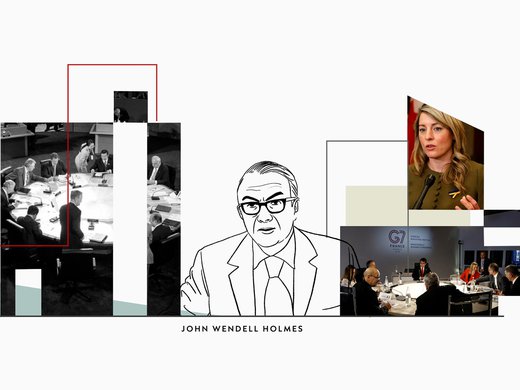The Paris Agreement on Climate Change is the culmination of the year in which the global community seems to have come of age and recognized its interconnectedness, and the importance of linking development, human rights and sustainability. The Addis Ababa Action Plan, the Sustainable Development Goals and the new Paris Agreement, all concluded this year, embrace principles of solidarity, equity and sustainability and reframe intractably complex issues as matters of common concern for all human kind to resolve together in a spirit of sharing and cooperation.
The Paris Agreement reads more like an epic poem than a legally binding instrument, but nonetheless it creates a legal structure through which the global community will manage the transition to a carbon neutral economy in the second half of this century. It maps out this journey with a preamble that speaks of human rights, indigenous rights, migrants, gender equality, intergenerational equity, Mother earth and climate justice.
Its key operational provisions include those:
- Setting global targets:
- Of temperature rise of well below 2 degrees Celsius from pre-industrial levels, and to pursue efforts to limit the temperature increase to 1.5 degrees above pre-industrial levels
- Increasing the ability to adapt to the adverse impacts of climate change and foster climate resilience and low greenhouse gas emissions development
- Making finance flows consistent with a pathway towards low greenhouse gas emissions and climate-resilient development
- Requiring Parties to submit nationally determined commitments, detailing how they will reduce greenhouse gas emissions domestically and by assisting developed countries in mitigation and adaptation, and providing that commitments renewed at least every 5 years must be progressively more ambitious;
- Requiring developed countries to provide financing to assist developed countries with mitigation and adaptation;
- Ensuring that adaptation action is country-driven, gender-responsive, participatory and fully transparent approach, taking into consideration vulnerable groups, communities and ecosystems, and guided by the best available science and, as appropriate, traditional knowledge, knowledge of indigenous peoples and local knowledge systems;
- Strengthening cooperative action on technology development and transfer through the Technology Mechanism;
- Recognizing the importance of averting, minimizing and addressing loss and damage, and confirming the Warsaw International Mechanism’s role on this issue;
- Promoting capacity building in developing countries to mitigate and adapt to climate change;
- Promoting cooperation in public education and public engagement on climate change and public access to information to help enhance action;
- Providing a transparency mechanism to facilitate implementation and compliance whereby these commitments must be accurately and consistently described and progress reported, which mechanism is flexible, facilitative, non-intrusive, non-punitive manner, respectful of national sovereignty, and avoids placing undue burden;
- Requiring under the transparency mechanism that each Party provide information related to climate change impacts and adaptation, and developed country Parties to provide information on financial, technology transfer and capacity-building support provided to developing country Parties, participating in facilitative, multilateral consideration of progress with respect to efforts;
- Including a compliance mechanism to review commitments and performance and hold states to account, through criticism rather than formal sanction (it is not entirely clear whether there are two mechanisms: one for transparency and one for implementation and compliance);
- The Conference of the Parties conducting periodic stock-taking starting in 2023 and occurring every 5 years thereafter to consider progress against long-term goals (the “global stocktake”), conducted in a comprehensive and facilitative manner, considering mitigation, adaptation and the means of implementation and support, and in the light of equity and the best available science.
- Of temperature rise of well below 2 degrees Celsius from pre-industrial levels, and to pursue efforts to limit the temperature increase to 1.5 degrees above pre-industrial levels
- Increasing the ability to adapt to the adverse impacts of climate change and foster climate resilience and low greenhouse gas emissions development
- Making finance flows consistent with a pathway towards low greenhouse gas emissions and climate-resilient development
At the international level there is still a lot to accomplish. The Agreement has been approved by the Conference of the Parties at COP21, but now States have to decide whether they will sign and ratify it, when it is open for signature (April 22, 2016). It comes into force when at least 55 Parties accounting in total for at least an estimated 55 percent of the total global greenhouse gas emissions have deposited their instruments of ratification, acceptance, approval or accession. There are a number of international mechanisms that will need to be implemented in order to oversee key aspects of the Agreement on transparency, implementation and compliance, mitigation of greenhouse gas emissions and support for sustainable development. Existing international mechanisms for finance, technology, and loss and damage need strengthening. The Draft Decision accompanying the Agreement includes many additional details related to its implementation.
In Canada this means a massive analysis needs to be done at the federal, provincial and territorial level to determine how best to implement the Agreement. Because it is drafted in general principles it may be relatively easy for the federal government to conclude it is in a position to sign and ratify. The real task will be in figuring out exactly how Canada can effectively contribute to reducing global greenhouse gas emissions and addressing climate change.
This requires a comprehensive review of national, provincial and territorial laws and policies to see what can be used and what needs to change. This likely will include putting a price on carbon through carbon taxes and/or cap and trade schemes, incentives for development and commercialization of green technology, programs to encourage conservation and transition to clean energy sources, programs to enhance carbon sinks and forest rehabilitation, and collaboration with developing countries to aid in mitigation and adaptation and related capacity building.
This analysis would contribute to developing a comprehensive Canadian Climate Change strategy. Canada’s indigenous peoples and all Canadians need to participate in this exercise as well as municipalities, universities, colleges and schools, people who work in farming, fishing, mining and extraction, and all other Canadian businesses. The Agreement calls for a complete transformation of the global economy, and Canadians need to think deeply about what they can do to survive and prosper in this emerging green economy.
Much has been said about the Paris Agreement being legally enforceable but disclosure and peer pressure appear to be the main means of enforcement. At the international level the main mechanism is the submitting and reporting on nationally determined commitments transparently, consistently and comparably in individual country reviews and collectively in periodic global stock-taking. There remains the possibility of international claims for severe climate change loss and damage caused by major emitter nations. Domestically there could be a variety of enforcement mechanisms under statutes and through claims brought under principles of tort law and constitutional and human rights law.
It was a day of celebration in Paris, the shadow of terrorism extinguished by the sunlight of France’s glorious success and an international community already embarking on this epic journey of solidarity, equity and sustainability.


